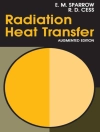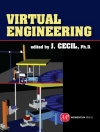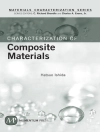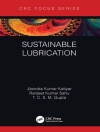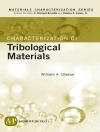This is the third volume of the "Handbook of Functional Nanomaterials" (4 volume set). Functional nanomaterials appear in our daily lives. These materials mainly include nanocomposites, nanopowders, nanoparticles and nanocoatings. Nanotechnology enables the creation of structures that do not exist in nature, those which cannot be produced by conventional chemistry. Some advantages of this technology are the synthesis of stronger, more adjustable materials as well as lower costs. Nanotechnology is scientific and research development at the atomic, molecular, or macromolecular levels in a dimension range of 1 to 100 nm; the fabrication and application of the structures, equipment, and systems which involve unique characteristics and new applications because of their small or medium dimensions; and the potential for the control and management at atomic scales. Therefore, nanotechnology involves industrial research and development at atomic, molecular, and macromolecular levels. This research aims to create and exploit the structures and systems which involve unique applications due to their small dimensions. The main difference between nanotechnology and other technologies is found within the dimensions and properties of the materials and structures applied to this technology. As a matter of fact, the main difference between these two types of technologies is the presence of base elements, which are indeed the same nanoscale elements with different properties in their nanoscale and larger states. Due to the developed properties of the very fine powders including surface chemistry, compressive properties, optical characteristics, and synthetic reactions, as well as an increasing demand for fine powders in industries, a very fine fragmentation is applied in many materials such as: minerals, ceramics, dyes, chemicals, microorganisms, pharmaceuticals and paper manufacturing. This volume mainly discusses the application and development of functional nanomaterials. Some of the functional nanomaterials that were discussed in this volume are titania nanostructures, hybrid nanomaterials based on nanoclays, multifunctional nanomedicine, nanocomposites using polypyrrole, metallic nanoparticles, quantum dots, fullerenes and capped nanotubes, graphene, nanocomposite coatings, functionalized carbon nanotube, nanopowders.
Mahmood Aliofkhazraei
Handbook of Functional Nanomaterials. Volume 3 – Application and Development [PDF ebook]
Handbook of Functional Nanomaterials. Volume 3 – Application and Development [PDF ebook]
Придбайте цю електронну книгу та отримайте ще 1 БЕЗКОШТОВНО!
Формат PDF ● Сторінки 588 ● ISBN 9781629485690 ● Редактор Mahmood Aliofkhazraei ● Видавець Nova Science Publishers ● Опубліковано 2015 ● Завантажувані 3 разів ● Валюта EUR ● Посвідчення особи 7223858 ● Захист від копіювання Adobe DRM
Потрібен читач електронних книг, що підтримує DRM


